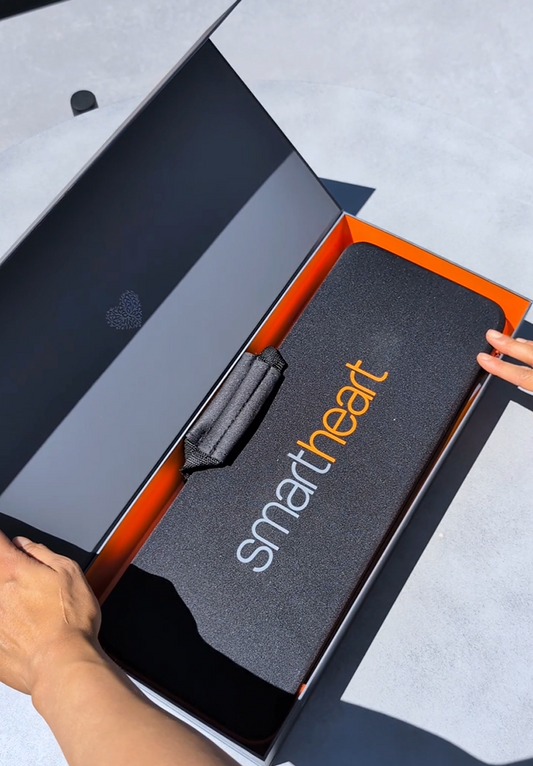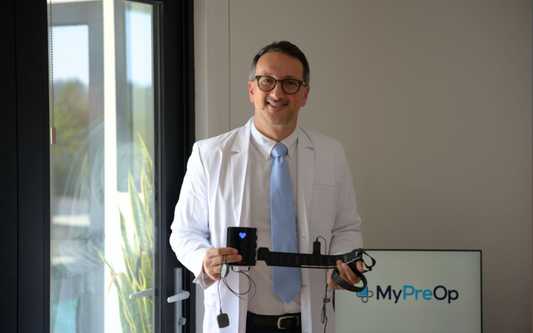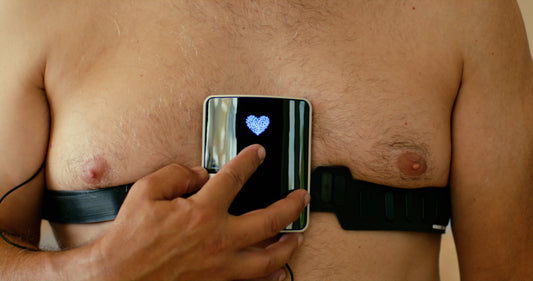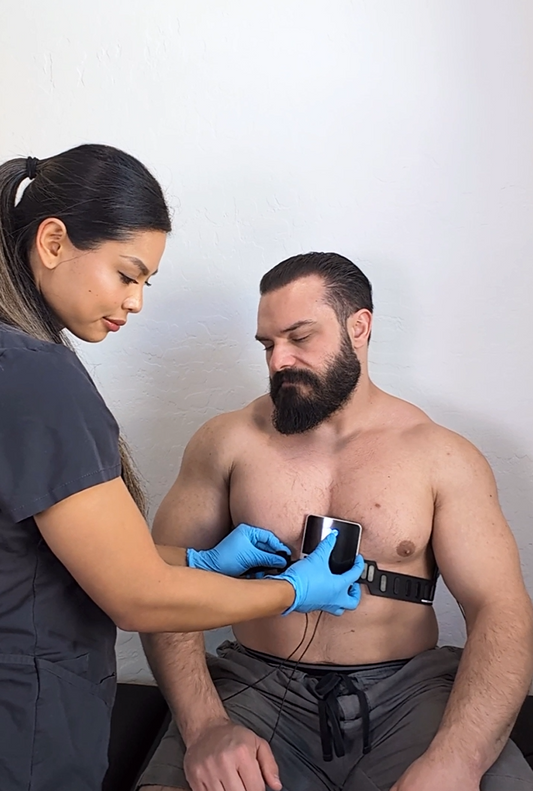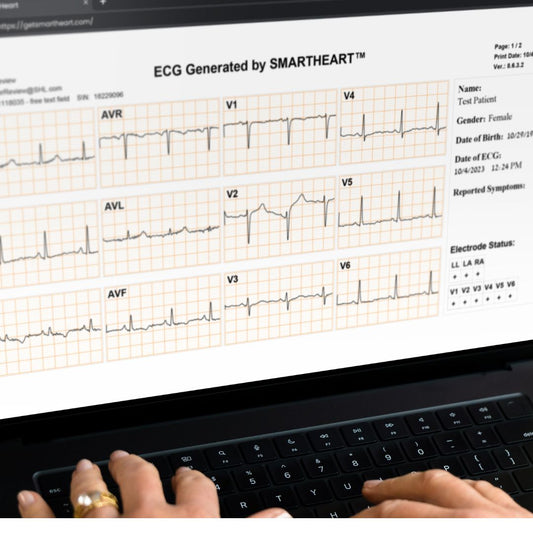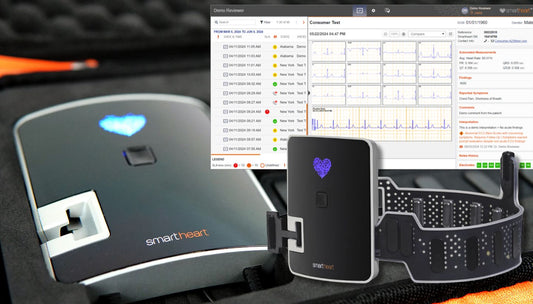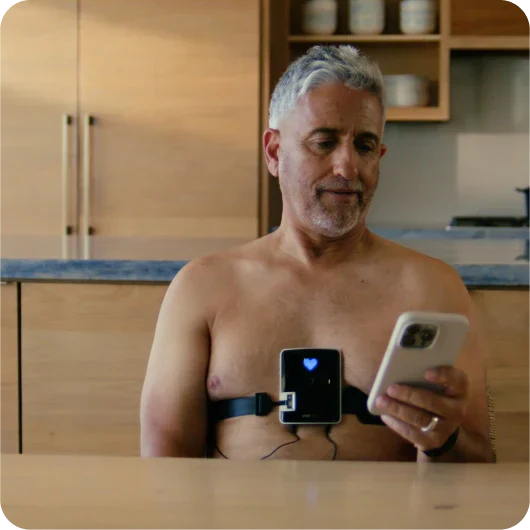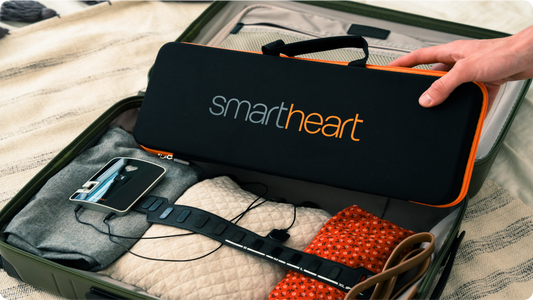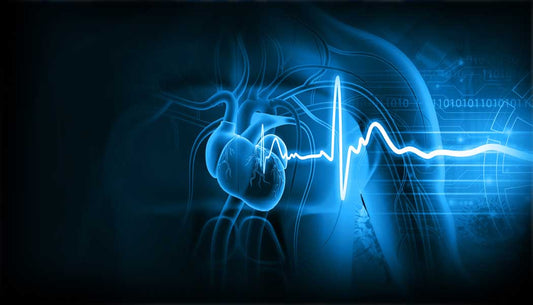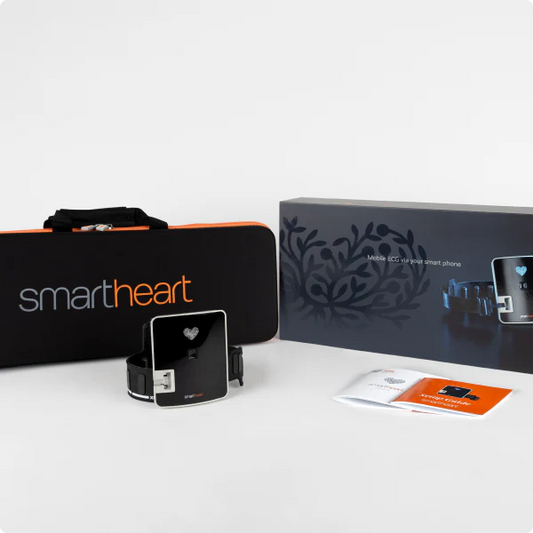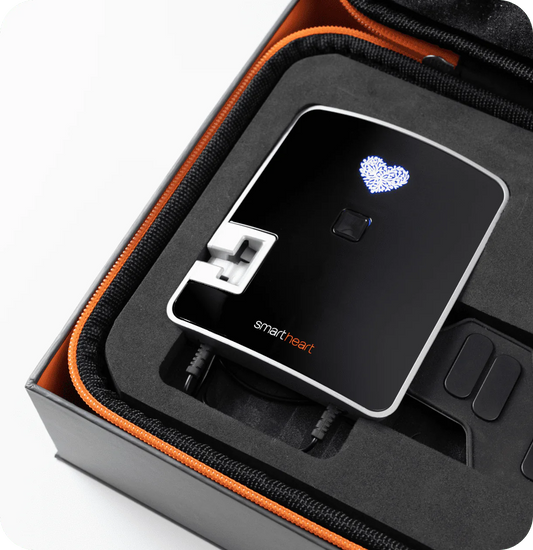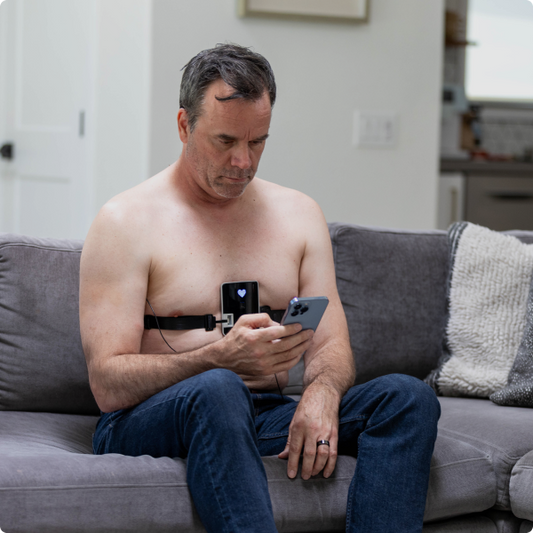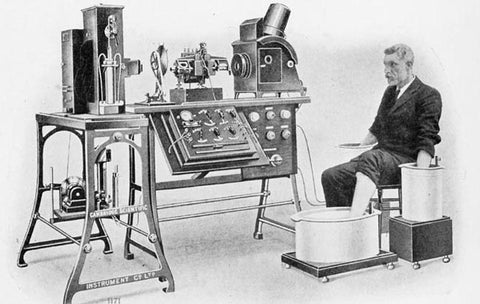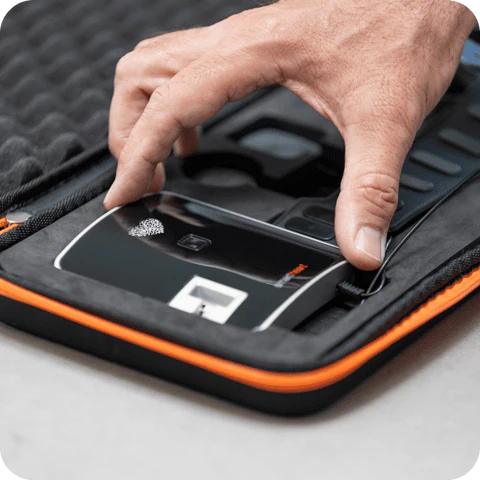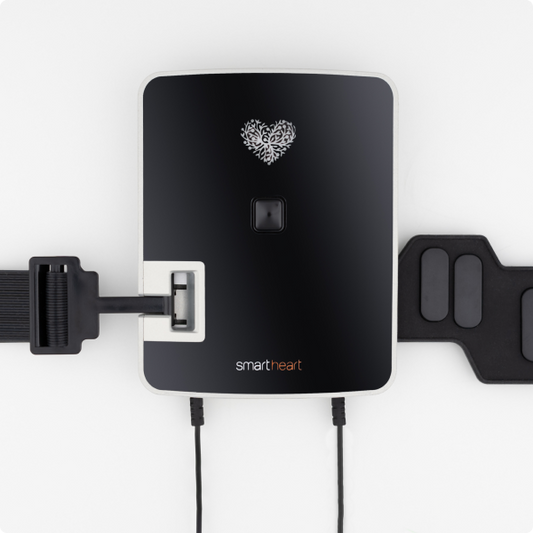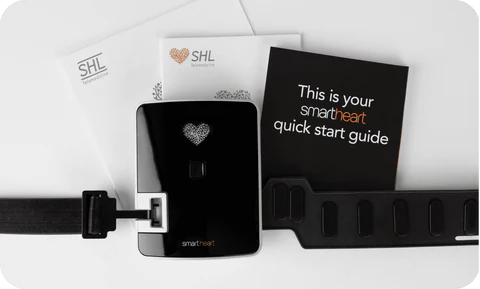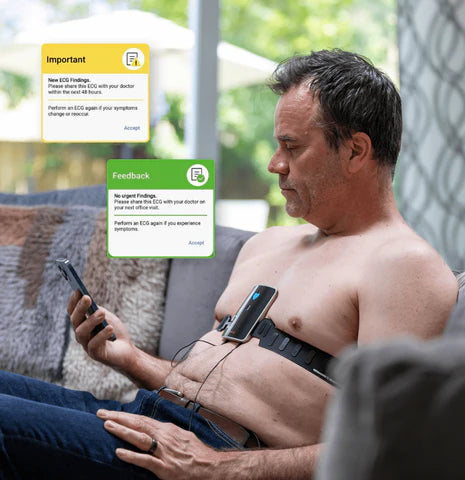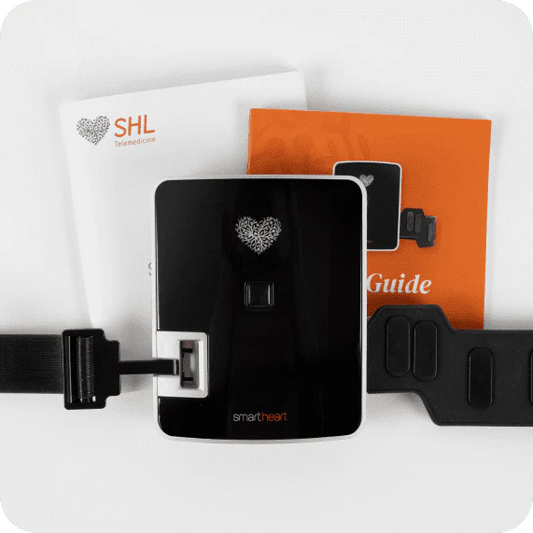Introduction to Heart Monitoring
Heart monitoring, while now seamlessly integrated into both clinical and everyday settings, has a rich tapestry of development that spans centuries. Originally, in ancient times, understanding the heart's behavior was more mystical than medical, interpreted through the basic sensation of a beating chest. As medical knowledge advanced, physicians started employing rudimentary auscultation methods, using the simplicity of touch and later the invention of the stethoscope in the 19th century to listen keenly to the rhythms and murmurs of the heart. Through trial and error, we have landed on the at home heart monitor for today’s needs.
The monumental breakthrough came in the 20th century with the advent of the electrocardiogram (ECG or EKG). This was no mere advancement; it was a revolution. For the first time, medical professionals could visualize the heart's electrical activity, understanding its intricacies and diagnosing complex cardiac issues. Yet, these early ECG machines were bulky, immensely expensive, and confined strictly to hospital settings. They necessitated specialized technicians for operation and even more specialized doctors for interpretation.
However, the relentless march of technology refused to let these limitations stand. The latter half of the 20th century witnessed an era of miniaturization and digital integration. Heart monitors started becoming more compact, affordable, and user-friendly. By the dawn of the 21st century, what was once the purview of dedicated cardiac centers began finding its way into general practitioner clinics and eventually, our homes.
Today's at home heart monitors are marvels of biomedical engineering. These devices, particularly those with 12-lead ECG capabilities, can capture detailed heart rhythms, detect abnormalities, help diagnose heart attacks and, some day, may even predict potential future issues. The integration with smart technology means data can be synced to phones or cloud storage, analyzed through sophisticated algorithms, and shared in real-time with healthcare providers. With wearable tech trends, heart monitoring has also become fashionable, seen in fitness bands and smartwatches that many wear daily.
From the early days of simply feeling the heart's beat to the interconnected, AI-driven devices of today, heart monitoring stands as a testament to human ingenuity and the persistent quest to understand, and care for, the organ that quite literally keeps us alive.

Cost Savings
One of the undeniable advantages of at home heart monitoring lies in the realm of finances. Hospital stays, frequent cardiology check-ups, and in-patient heart monitoring procedures carry significant costs. For many patients, especially those requiring regular monitoring due to chronic conditions or recovery from surgical procedures, these costs can accumulate quickly. It's not just the direct billing for the monitoring service; there are ancillary charges to consider. Transportation to and from the hospital, potential accommodation expenses for family members, lost wages from time taken off work, and sometimes even meals or parking fees can all add to the financial burden.
Enter the at home heart monitor. While there's an initial investment in purchasing a quality device, the long-term savings can be substantial. The device provides continuous or on-demand monitoring without the need for repetitive hospital visits. It negates the need for hospital bed occupancy, which in many healthcare systems globally, can lead to considerable charges, especially for extended periods. Additionally, the ease of transferring data digitally means follow-up consultations can sometimes be done virtually, further reducing the need for physical visits and associated costs.
Beyond the direct monetary savings, there's an implicit value in the reduced stress and convenience that at home monitoring offers. Not having to frequently navigate hospital logistics, appointment bookings, and the associated anxieties can significantly improve the quality of life for patients. In the grand scheme, while health is paramount, and decisions should never be solely based on cost, the financial benefits of at home heart monitoring are compelling and can make advanced cardiac care more accessible to a broader segment of the population.
Convenience and Comfort
In today's fast-paced world, the value of convenience and comfort cannot be overstated, especially when it pertains to health and well-being. At home heart monitors epitomize these values. Gone are the days when monitoring one's heart meant being tethered to bulky machines in sterile hospital rooms or enduring the hustle and bustle of frequent clinic visits. Today's sophisticated yet user-friendly devices offer the freedom to keep a watchful eye on one's heart health right from the sanctuary of home.
For many patients, this shift is transformative. No longer are they bound by appointment slots, the anxiety of travel to and from clinics, or the often inevitable long waiting times amidst other patients. Monitoring from home eliminates these logistical hassles. It means being able to go about daily routines, work schedules, and even leisurely activities without the disruption of clinical check-ins.
Moreover, there's an element of psychological comfort that accompanies at home monitoring. Being in a familiar environment, surrounded by loved ones, and having the liberty to relax in one's favorite chair or bed while monitoring can have positive effects on mental well-being. It provides a sense of normalcy even when dealing with cardiac concerns.
Furthermore, the advancements in technology mean that these devices often come with intuitive interfaces, making them accessible even for those who might not consider themselves tech-savvy. Clear instructions, user-friendly apps, and sometimes even 24/7 support hotlines ensure that patients feel confident in using the devices.
In essence, the shift towards at home heart monitoring is not just about technological progression; it's about centering patient experience. It's about recognizing that effective medical care is not solely about the clinical outcomes but also about the journey - one that prioritizes patient convenience and comfort at every step.
Early Detection
Among the myriad benefits of at home heart monitoring, perhaps the most crucial is the capacity for early detection. The heart, with its rhythmic cadence, can sometimes deviate from its regular pattern due to various factors, from lifestyle choices to underlying medical conditions. These deviations, when caught early, can be the difference between preventive care and emergency intervention.
At home heart monitoring provides an unparalleled advantage in this arena. Unlike periodic check-ups which offer only a snapshot of heart health at a given moment, consistent 12-lead ECG monitoring paints a comprehensive picture over time. This allows for the detection of anomalies that might be sporadic or situational. For instance, a short term irregular rhythm that happens in the middle of the night, or a patterned disruption linked to specific activities, is more likely to be captured with regular monitoring than during a scheduled, limited-duration ECG exam at a clinic.
The ability to promptly identify these irregularities which can be very serious means timely interventions can be set in motion. Whether it's a simple lifestyle adjustment, medication alteration, or more in-depth examinations, catching issues early often translates to more straightforward and less invasive solutions. Moreover, it provides healthcare professionals with a more detailed dataset to make informed decisions.
In many scenarios, early detection via regular at home heart monitoring has preempted significant cardiac events, giving patients a proactive tool in their arsenal against potential health threats. In the intricate dance of cardiovascular health, the adage "forewarned is forearmed" rings especially true, and at home heart monitors serve as vigilant sentinels in this proactive approach to cardiac care.
Empowering Patients
A profound shift in healthcare dynamics over recent years has been the movement towards patient-centered care. It's an approach that not only seeks to treat ailments but also to involve patients as active participants in their health journey. At home heart monitors play a pivotal role in this paradigm change, serving as tools of empowerment for many.
With these devices, patients are no longer passive recipients of healthcare; they become engaged stewards of their own well-being. Having the ability to monitor one's heart at will provides a tangible sense of control. It demystifies the often intimidating realm of cardiology, making it accessible and understandable. When a patient can visualize their heart rhythms, note the impacts of certain activities or foods, and see the real-time effects of medication or lifestyle changes, they gain invaluable insights into their health.
Furthermore, this empowerment extends to the relationship between patients and healthcare professionals. Armed with data and personal observations, patients can engage in more informed dialogues with their doctors. They can ask specific questions, discuss patterns they've noticed, and collaborate on treatment plans. This fosters a partnership approach, where the physician isn't just an authority but also a collaborator in the patient's health journey.
Additionally, the psychological boost that comes from feeling in control shouldn't be underestimated. Many patients report increased confidence, reduced anxiety, and a heightened sense of responsibility towards their health when they have active monitoring capabilities at their fingertips.
In essence, at home heart monitors are more than just devices; they're catalysts for a transformative patient experience, championing autonomy, involvement, and an enhanced sense of agency in one's healthcare narrative.
Data Over Time
In the realm of heart health, it's not just the beats that matter, but the patterns they form over time. One of the most transformative aspects of at home heart monitors is their ability to provide a systematic, longitudinal view of cardiovascular activity. While isolated readings during infrequent doctor visits can provide crucial snapshots, they might miss the broader narrative that only accumulative data can tell.
Imagine the heart's behavior as a novel. An isolated reading might provide a glimpse into one chapter, but the full story, with its ebbs and flows, nuances, and arcs, unfolds over multiple chapters. Methodical, well organized data from at home monitors lets us read this entire novel, allowing for the identification of patterns that might be indicative of underlying conditions or responses to external factors. For instance, subtle changes in heart rhythm post-meal, or during specific times of the day, can provide invaluable insights into how one's lifestyle, diet, or even circadian rhythms might be affecting heart health.
Moreover, having a rich dataset enables the tracking of progress, especially beneficial post-treatment or surgery. Monitoring recovery, evaluating the effectiveness of medications over time, or observing the heart's response to rehabilitative exercises becomes feasible and accurate with ongoing data.
Additionally, continuous data can preempt potential issues. Minute deviations or emerging patterns can serve as early indicators, often long before they manifest as noticeable symptoms. This provides a window of opportunity for timely intervention, potentially averting severe complications.
In today's data-driven age, the heart is no exception. The ability to gather, analyze, and interpret consistent cardiac data stands as one of the pillars of modern cardiology care. It underscores the idea that understanding our heart isn't just about listening to its beats but also decoding the stories these beats tell over time.
Enhancing Exercise and Physical Activity
In the intersection of fitness and technology, at home heart monitors have emerged as indispensable allies for those seeking to optimize their physical endeavors. Exercising, while undeniably beneficial, also demands a fine balance; pushing oneself too hard can be as detrimental as not exercising at all. Herein lies the brilliance of heart monitors—they offer a window into the cardiovascular response to physical activity, enabling individuals to tailor their workouts for maximum benefits and safety.
Firstly, by providing real-time feedback on heart rate zones, these monitors guide users in hitting and maintaining target zones tailored to their fitness goals. Whether it's fat burning, aerobic conditioning, or peak performance, understanding one's heart rate ensures that workouts are both effective and efficient. This data-driven approach replaces guesswork with precision, allowing for more structured and goal-oriented workouts.
Moreover, understanding one's cardiovascular limits is pivotal. For those returning to exercise after a hiatus, those with underlying health conditions, or even seasoned athletes, heart monitors act as safeguards. They can alert users if heart rates approach dangerous thresholds, ensuring that enthusiasm and exertion don't inadvertently lead to harm. This protective function is especially crucial for individuals with specific cardiac conditions or those under cardiac rehabilitation.
Beyond just numbers, these monitors can also be instrumental in gauging recovery. Recovery heart rate—a measure of how quickly the heart rate declines post-exercise—can provide insights into one's cardiovascular fitness and overall health. Tracking this parameter over time can inform users about their improving fitness levels or hint at potential overtraining.
Lastly, the psychological aspect can't be overlooked. Seeing tangible data reflecting one's efforts can be immensely motivating. It fosters a sense of accomplishment, encouraging adherence to exercise routines and instilling confidence in one's physical capabilities.
In essence, at home heart monitors have redefined the landscape of exercise and physical activity. They transition workouts from mere physical endeavors to informed, data-driven experiences, optimizing benefits while ensuring the heart's safety remains paramount.
Reducing Anxiety for At-Risk Individuals
For those who've faced a significant cardiac event or are considered at-risk due to familial or medical history, the shadow of uncertainty often lingers. Every twinge or unfamiliar sensation can spiral into anxiety, with concerns about heart health constantly at the forefront. In these contexts, at home heart monitors serve a dual purpose: they are both diagnostic tools and agents of reassurance, bringing a much-needed respite from the pervasive worry.
The capability to monitor heart activity in real-time bestows upon individuals an immediate source of validation. Should there be a feeling of discomfort or unease, one doesn't need to wait in apprehension for the next doctor's appointment. Immediate feedback can be sought, and in many instances, the mere confirmation that the heart's rhythms are stable can allay fears. This near instantaneous nature of data retrieval and interpretation transforms the device into a constant, vigilant companion, always ready to provide clarity.
Beyond the patient, the ripple effects of this peace of mind extend to families and caregivers. Knowing that their loved ones have a direct line of sight into their heart health reduces the collective anxiety in households. It brings a semblance of control back into lives often marked by unpredictability and apprehension.
Additionally, many of these monitors come equipped with features to share data seamlessly with healthcare providers or alert systems. This ensures that if any genuine irregularity arises, swift and appropriate interventions can be facilitated. Such safety nets further reinforce the sense of security, creating an environment where both the patient and their support network feel more empowered and less helpless.
In the intricate maze of cardiac care, the emotional and psychological facets are just as vital as the physical ones. At home heart monitors, by offering real-time insights and prompt responsiveness, serve as beacons of reassurance, illuminating the path for at-risk individuals and their families towards a more serene and less anxiety-ridden journey.
Integration with Modern Technology
The age of technology has ushered in an era where health and innovation are interwoven more closely than ever. At the heart of this confluence, pun intended, are the at home heart monitors which have embraced contemporary tech advancements to enhance user experience and outcomes. These aren't standalone, siloed devices anymore; they're integral components of the connected digital ecosystem we inhabit daily.
One of the most salient features is the ability of these monitors to seamlessly sync with smartphones or other smart devices. With this synchronization, the heart's rhythms can be tracked alongside daily activities, sleep patterns, or even stress levels, painting a holistic picture of one's well-being. Apps specifically designed to interface with these monitors often come with user-friendly dashboards, trend analytics, and interpretative insights, making the data not just accessible but also comprehensible to the layperson.
Furthermore, this integration with smartphones facilitates easy and instant data sharing. With a few taps, one can transmit their cardiac readings to physicians, bypassing the need for physical visits just to share data. This digital relay accelerates the consultation process and allows for timely feedback, especially crucial if there's a need for urgent intervention such as during a heart attack.
Moreover, many monitors have advanced alert systems integrated. Should the device detect significant irregularities or anomalies, automated alerts can be sent out, not just to the user, but also, if set up, to family members, caregivers, or even medical professionals. This real-time alert system underscores the preventive and protective role of these devices.
Beyond the functional, the aesthetic and ergonomic integration of heart monitors into the modern tech landscape means they're designed to be unobtrusive, sleek, and sometimes even fashionable. They can be worn without drawing undue attention, ensuring that users feel comfortable incorporating them into their daily lives.
In sum, the nexus between at home heart monitors and modern technology isn't merely about advanced features; it's about crafting an experience that is intuitive, integrated, and in tune with the digital rhythms of contemporary life, ensuring cardiac care doesn't just remain a medical necessity but evolves into a lifestyle choice.
Supporting Aging in Place
The golden years are often envisioned as a time of tranquility, reflection, and retaining the warmth of familiar surroundings. As the global population ages and the desire to 'age in place' gains traction, the necessity for tools that promote independent living grows. At home heart monitors have emerged as invaluable assets in this pursuit, enabling the elderly to maintain their autonomy while ensuring their health remains uncompromised.
Cardiac concerns naturally amplify with age, given the wear and tear the heart endures over a lifetime. Regular monitoring becomes paramount, not just for those with diagnosed conditions, but even for those wanting to keep a preemptive watch on their heart's behavior. At home heart monitors cater to this need perfectly. Their user-friendly design ensures that even those not tech-savvy can engage with them comfortably.
By having real-time access to their heart data, seniors can enjoy the liberty of their homes without the constant apprehension of undetected cardiac events. These monitors serve as silent, watchful guardians, tracking heart rhythms and flagging any potential anomalies. The comfort of knowing that a device is continuously safeguarding them often boosts the confidence of the elderly, allowing them to partake in activities they love, from gardening to gentle exercises, with greater assurance.
Furthermore, for families and caregivers, these devices are a godsend. The worry of leaving an elderly loved one alone is significantly assuaged when they know there's a vigilant monitor overseeing their heart's well-being. Plus, with the capacity to remotely access this data or receive alerts, caregivers can respond promptly to any concerns, even from a distance.
Ultimately, the goal of aging in place is about preserving dignity, autonomy, and the cherished sense of home. At home heart monitors, with their blend of technology and care, play a pivotal role in this narrative. They ensure that the sunset years are not just marked by safety and health but also by the cherished freedom of staying rooted in familiar, beloved surroundings.
Limitations and Considerations
Though at home heart monitors have indisputably revolutionized personal cardiac care, it's crucial to approach them with an informed perspective, recognizing their potential limitations and areas of caution. By understanding these nuances, users can ensure they leverage these devices' strengths while being cognizant of their constraints.
First and foremost, while these monitors are impressively accurate in capturing data, they should not be viewed as total replacements for comprehensive cardiac evaluations conducted by professionals in clinical settings. They provide snapshots and trends of heart activity, but some conditions might necessitate more specialized tests or in-depth examinations that only hospitals or clinics can offer.
Additionally, it's possible for users, especially those unfamiliar with heart data, to misinterpret the information. Over-reliance on self-interpretation can sometimes lead to unnecessary panic or complacency. For instance, occasional, isolated irregularities might be benign and not indicative of a larger concern. Conversely, consistently normal readings do not guarantee the absence of all potential cardiac issues.
Battery life and maintenance can also be considerations for some models. Regularly ensuring that the device is charged and functioning correctly is pivotal. A device running out of power during a crucial moment could pose challenges, especially for those who've come to rely heavily on it.
Connectivity issues can sometimes arise, especially if the monitor relies on syncing with a smartphone or other device. In areas with weak or no internet connectivity, data transmission might be hindered, potentially delaying critical evaluations.
Lastly, it's essential to consider the psychological implications. Continuous monitoring, while beneficial, might inadvertently heighten anxiety for some users. The constant awareness of one's heart activity can, in rare instances, lead to an obsessive focus or hypervigilance, detracting from the quality of life.
In summary, while at home heart monitors are undeniably transformative tools in cardiac care, they come with their set of considerations. Approaching them with a balanced, informed perspective ensures they are used optimally, complementing, rather than replacing, traditional healthcare avenues.
Privacy and Data Security
In today's interconnected digital landscape, privacy concerns and data security have vaulted to the forefront of discussions around health devices, and at home heart monitors are no exception. When individuals share intimate details of their heart's workings, the assurance that this sensitive data remains protected is paramount.
Modern heart monitors, especially those that sync with smartphones or cloud services, store and transmit vast amounts of personal health data. The potential for data breaches or unauthorized access is a genuine concern. Users need to be aware of the security protocols and encryption standards employed by the device manufacturers to keep this information safeguarded.
Moreover, clarity on data ownership is essential. While the data is generated by the individual, how it's stored, accessed, and potentially shared by the device company might vary. Some companies might anonymize and aggregate user data for research or product improvement purposes. While this can lead to advancements in cardiac care, users should be well-informed and, if possible, given the choice to opt in or out of such data usage.
Another facet to consider is the compatibility with third-party applications. If a heart monitor integrates with other health apps or platforms, ensuring that these third parties also adhere to stringent privacy standards becomes crucial.
In essence, while at home heart monitors offer unparalleled insights and convenience, users should be proactive in understanding the digital footprint their data creates. By staying informed and choosing devices with robust security features, they can enjoy the benefits of modern cardiac care without compromising their privacy.
Conclusion
The heart, often heralded as the epicenter of life and emotion, demands our utmost attention and care. As we navigate the evolving terrains of healthcare and technology, the emergence of at home heart monitors stands as a testament to our collective drive for empowerment, autonomy, and proactive health management. These devices, more than just gadgets, represent a monumental shift in how individuals engage with their own well-being.
Technology, in its relentless quest for advancement, has handed the reins of cardiac care back to individuals. No longer are we solely reliant on infrequent clinic visits or the expertise of professionals for insights into our heart's rhythm and health. With real-time data, trend analytics, and immediate feedback, we are now equipped to play an active, informed role in our healthcare journeys.
But with great power comes great responsibility. As we embrace the convenience and empowerment offered by at home heart monitoring, it is incumbent upon us to use these tools wisely, understanding their capabilities and limitations, always complementing and never replacing the crucial role of professional medical advice.
The trajectory of healthcare is unmistakably bending towards greater individual agency and enhanced access. At home heart monitors, in bridging the gap between individuals and their health data, are pioneering a future where personal health becomes a collaborative, continuous, and informed endeavor. As we step into this future, our heart's health is not just in the hands of professionals, but also, quite literally, at our fingertips.


